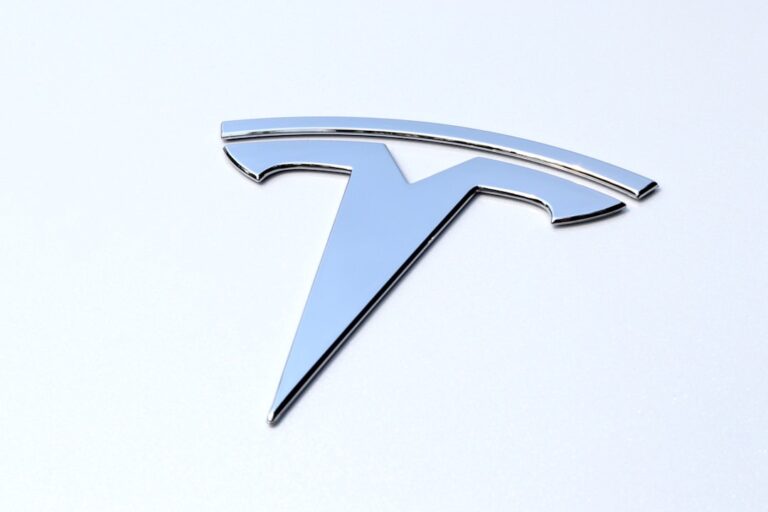
Tesla, Inc., founded in 2003 by engineers Martin Eberhard and Marc Tarpenning, has become synonymous with electric vehicles (EVs) and sustainable energy solutions. The company, led by the visionary Elon Musk since 2004, has not only revolutionized the automotive industry but has also emerged as a significant player in the stock market. Tesla’s stock, traded under the ticker symbol TSLA on the NASDAQ, has garnered immense attention from investors, analysts, and the general public alike.
The company’s innovative approach to electric vehicles, battery technology, and renewable energy products has positioned it as a leader in the transition to sustainable energy. Tesla’s stock journey has been nothing short of remarkable. From its initial public offering (IPO) in June 2010 at a price of $17 per share, TSLA has experienced dramatic fluctuations, reflecting both the volatility of the tech sector and the broader market’s response to the company’s ambitious goals.
As of late 2023, Tesla’s stock price has soared to unprecedented heights, making it one of the most valuable automakers in the world. This meteoric rise has attracted a diverse range of investors, from retail traders to institutional funds, all eager to capitalize on the company’s growth potential and its role in shaping the future of transportation.
Key Takeaways
- Tesla stock has been a hot topic in the investment world, with its performance and future outlook generating significant interest.
- Tesla’s stock has seen significant growth in recent years, with its market capitalization surpassing that of traditional automakers.
- Factors influencing Tesla’s stock price include production numbers, delivery targets, competition, and regulatory environment.
- Tesla’s financial analysis shows a mix of strong revenue growth and profitability challenges, with a focus on future potential rather than current performance.
- When compared to competitors, Tesla stands out for its focus on electric vehicles, innovation, and potential for market disruption.
Tesla’s Performance in the Stock Market
Tesla’s performance in the stock market has been characterized by extreme volatility, with periods of rapid growth followed by sharp corrections. After its IPO, TSLA experienced a slow start, trading below $30 for several years. However, as the company began to ramp up production and deliver its Model S sedan in 2012, investor sentiment shifted dramatically.
By 2013, Tesla’s stock had more than tripled in value, reflecting growing confidence in its business model and technological advancements. The real turning point for Tesla came in 2020 when the company reported its first full year of profitability. This milestone was met with enthusiasm from investors, propelling TSLA’s stock price to new heights.
The stock surged over 700% that year alone, driven by a combination of strong sales figures, increased production capacity, and a broader shift towards electric vehicles globally. The inclusion of Tesla in the S&P 500 index in December 2020 further solidified its status as a major player in the market, attracting additional investment from index funds and institutional investors.
Factors Influencing Tesla’s Stock Price

Several factors contribute to the fluctuations in Tesla’s stock price, making it a subject of intense scrutiny among analysts and investors. One of the primary drivers is the company’s production and delivery numbers. Each quarter, Tesla releases its vehicle delivery figures, which serve as a key indicator of demand and operational efficiency.
Strong delivery numbers often lead to positive market sentiment and an uptick in stock price, while disappointing figures can result in sharp declines. Another significant factor is Elon Musk’s influence on the company and its stock. Musk’s public statements, whether through social media or interviews, can have an immediate impact on investor sentiment.
For instance, his tweets about potential product launches or company initiatives can lead to rapid price movements. Additionally, broader market trends related to electric vehicles and renewable energy also play a crucial role. As governments worldwide implement stricter emissions regulations and promote EV adoption through incentives, Tesla stands to benefit significantly, further influencing its stock price.
Analysis of Tesla’s Financials
| Year | Revenue | Net Income | Operating Cash Flow |
|---|---|---|---|
| 2018 | 21.46 billion | -976 million | 2.78 billion |
| 2019 | 24.58 billion | 862 million | 2.42 billion |
| 2020 | 31.54 billion | 721 million | 5.89 billion |
A comprehensive analysis of Tesla’s financials reveals a company that has transitioned from a startup with significant losses to a profitable enterprise with robust revenue growth. In recent years, Tesla has consistently reported increasing revenues, driven primarily by rising vehicle sales. For instance, in 2022, Tesla reported revenues exceeding $81 billion, a substantial increase from previous years.
This growth trajectory is indicative of strong demand for its vehicles and successful scaling of production capabilities. Moreover, Tesla’s gross margins have improved significantly as it has optimized its manufacturing processes and reduced costs associated with battery production. The company’s focus on vertical integration—producing many components in-house rather than relying on third-party suppliers—has also contributed to improved profitability.
In addition to vehicle sales, Tesla’s energy generation and storage segment has begun to gain traction, providing an additional revenue stream that complements its automotive business. This diversification is crucial for long-term sustainability and growth.
Comparison with Competitors
When evaluating Tesla’s position in the market, it is essential to consider its competitors within the automotive industry and the broader EV landscape. Traditional automakers such as Ford, General Motors, and Volkswagen have made significant strides in developing their electric vehicle offerings to compete with Tesla. For example, Ford’s Mustang Mach-E and GM’s Chevrolet Bolt have garnered positive reviews and sales figures, indicating that established players are serious about entering the EV market.
However, despite increasing competition, Tesla maintains a competitive edge due to its brand recognition, technological advancements, and extensive charging infrastructure. The Supercharger network is a significant advantage that sets Tesla apart from many competitors who are still developing their charging solutions. Furthermore, Tesla’s commitment to innovation—evident in its advancements in battery technology and autonomous driving capabilities—positions it favorably against rivals who may struggle to keep pace with rapid technological changes.
Tesla’s Future Outlook

Looking ahead, Tesla’s future outlook appears promising but is not without uncertainties. The company has ambitious plans for expansion, including new Gigafactories in various regions worldwide aimed at increasing production capacity and meeting growing demand for electric vehicles. The anticipated launch of new models such as the Cybertruck and updates to existing models like the Model S and Model X are expected to further bolster sales figures.
Additionally, Tesla’s focus on energy products—such as solar panels and energy storage solutions—aligns with global trends toward sustainability and renewable energy adoption. As governments push for cleaner energy sources and consumers become more environmentally conscious, Tesla is well-positioned to capitalize on these trends. However, achieving these ambitious goals will require navigating challenges such as supply chain disruptions and competition from both established automakers and new entrants into the EV market.
Risks and Challenges for Tesla Stock
Despite its successes, investing in Tesla stock comes with inherent risks and challenges that potential investors must consider. One significant risk is market volatility; TSLA has historically experienced sharp price swings that can be influenced by broader market trends or company-specific news. This volatility can be unsettling for investors who prefer stable returns.
Another challenge lies in regulatory scrutiny and potential changes in government policies regarding electric vehicles and renewable energy incentives. As governments around the world implement new regulations aimed at reducing carbon emissions, any shifts in policy could impact demand for Tesla’s products or alter competitive dynamics within the industry. Additionally, supply chain issues—exacerbated by global events such as pandemics or geopolitical tensions—could hinder production capabilities and affect financial performance.
Conclusion and Investment Considerations
In summary, Tesla stock represents both an opportunity and a challenge for investors looking to engage with one of the most dynamic companies in the automotive sector. Its impressive growth trajectory is supported by strong financial performance and a commitment to innovation; however, potential investors must remain cognizant of the risks associated with volatility and competition within the EV market. As Tesla continues to expand its product offerings and production capabilities while navigating regulatory landscapes and supply chain complexities, careful consideration of these factors will be essential for making informed investment decisions regarding TSLA stock.
Tesla stock has been a hot topic lately, especially with news of their recent acquisition of a bankrupted automation engineering firm. This move could potentially boost Tesla’s production capabilities and further solidify their position in the electric vehicle market. For more insights on Tesla’s market performance, traders are also keeping a close eye on China’s EV sales, as discussed in a recent article on tslainvestors.com. Additionally, concerns about the overall stock market being overvalued are also on the radar, prompting investors to assess the potential risks and rewards of investing in companies like Tesla. For more on this topic, check out the article on tslainvestors.com.
Check out the latest Tesla products that you purchase right now!
